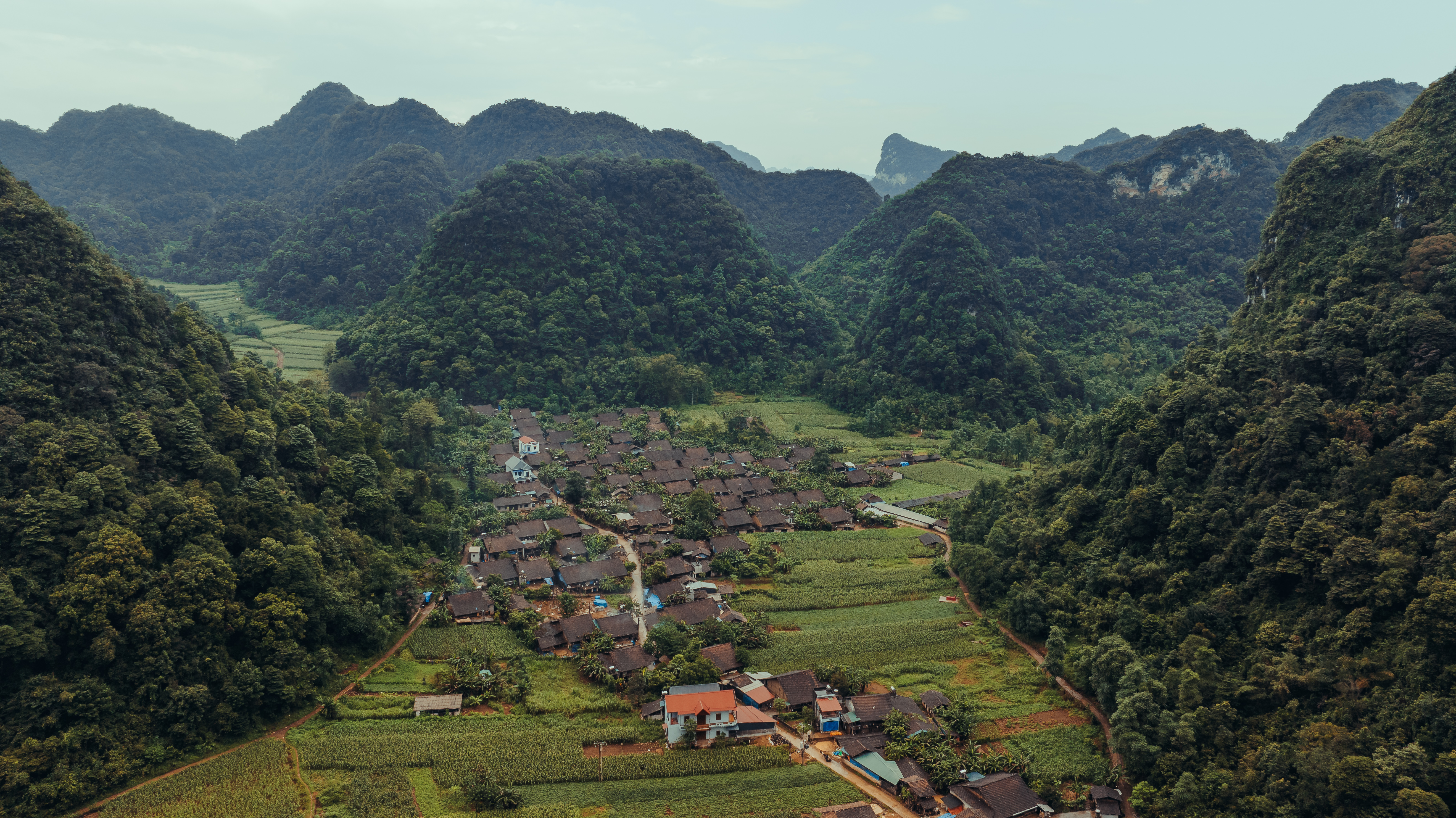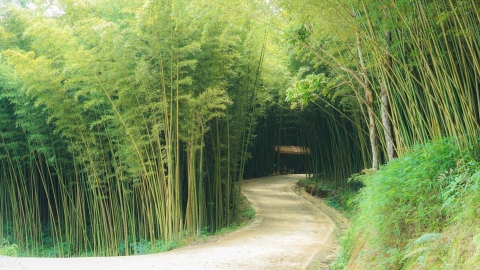"In Cao Bang, the Nung An people in Lung Ri hamlet, Tu Do commune, Quang Hoa district are very good at making yin-yang tiles. The stilt houses with yin-yang tile roofs have also become a unique feature here," photographer Vu Khoa shared with Travellive.

Lung Ri yin-yang tile craft village is a living testament to the ingenuity, creativity and long-standing tradition of the Nung An people in Cao Bang.

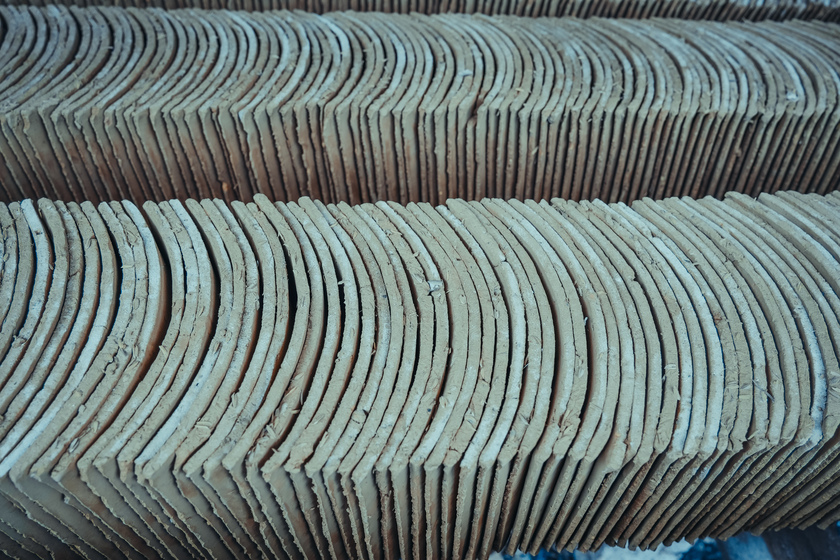
Lung Ri hamlet is more than 30 km from Cao Bang city, this is a hundreds of years old yin-yang tile making village. Lung Ri tiles are handcrafted very carefully, durable, beautiful in color, used to cover the roofs of houses very cool. The roofs covered with yin-yang tiles have a characteristic ancient appearance that is familiar to the people of the highlands. Making tiles not only brings income to the people, but also contributes to preserving the traditional craft of the locality.
According to the locals, photographer Vu Khoa said that it is originally called yin-yang tiles because this type of tile always comes in a pair of 2 pieces, the yin tile for roofing will face up and the yang tile will face down. Lung Ri's yin-yang tiles (also known as trough tiles) are completely handmade: Selecting soil, incubating soil, kneading soil, filtering sand, shaping, drying, firing... to create a unique product that is durable over time.
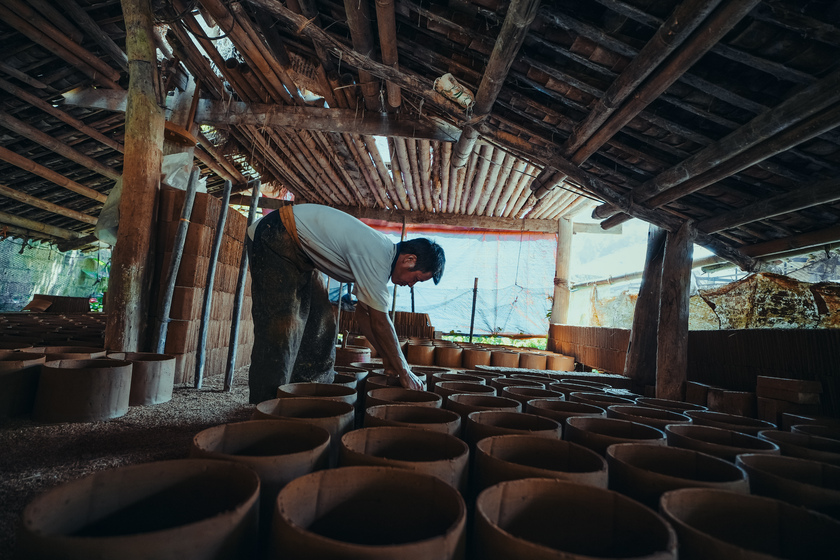
Lung Ri tiles are carefully handcrafted, durable, beautiful in color, and very cool when used to cover roofs.
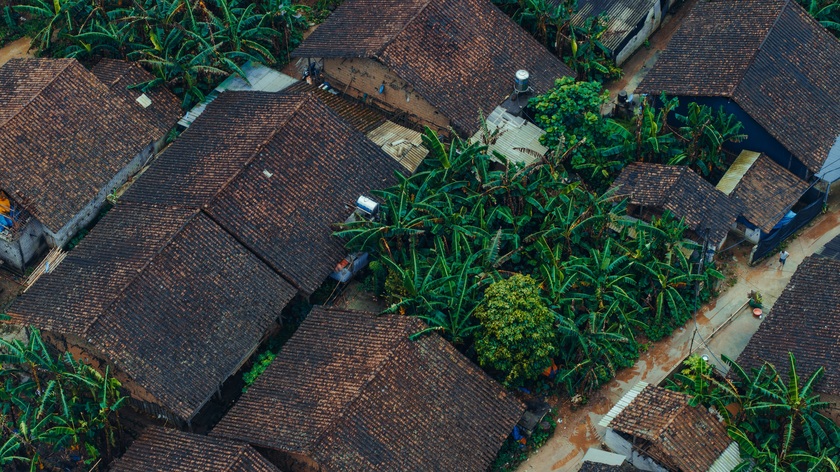
The Nung An people created this unique type of tile, used to cover traditional roofs.
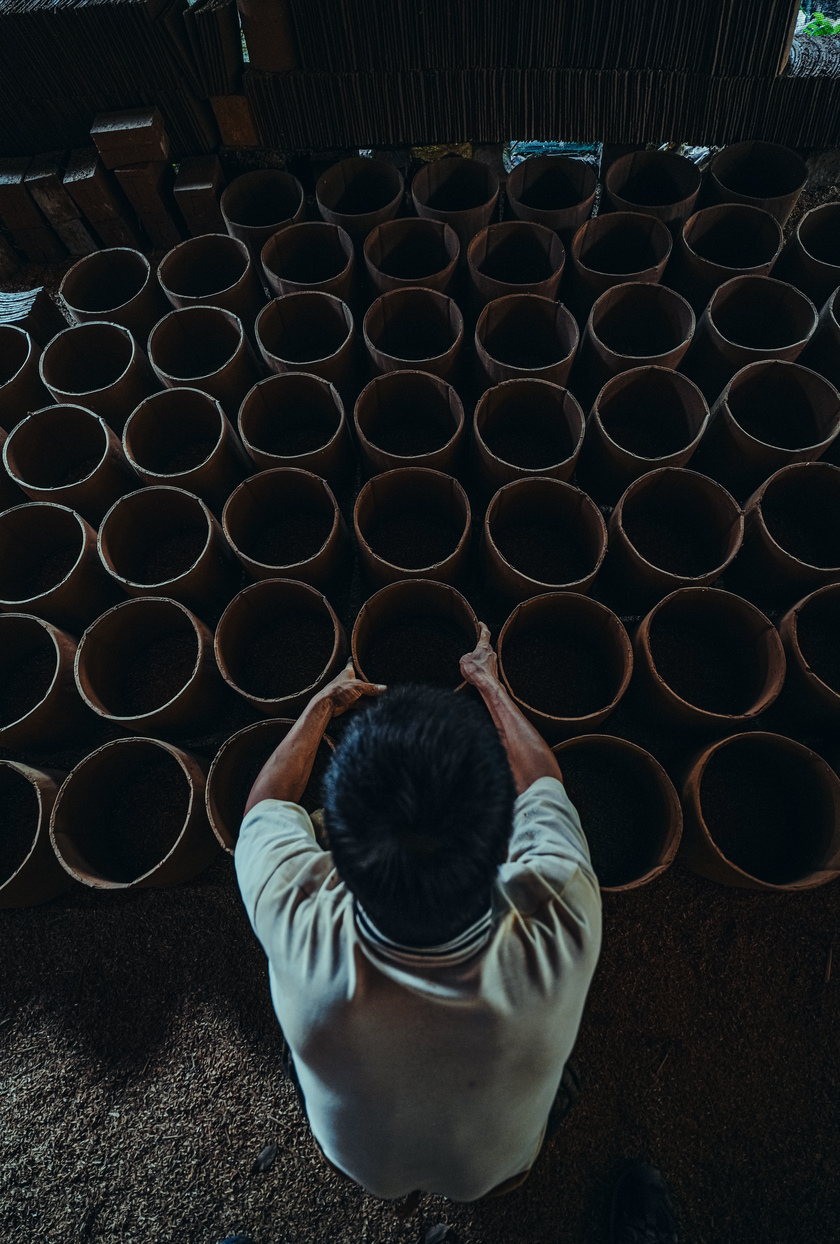
To make roof tiles in the traditional way, it must go through many meticulous stages.
Up to now, the economic value of yin-yang tiles is not high due to competition with industrially produced tiles on the market. However, not wanting to lose the traditional craft left by their ancestors, when coming to the Nung An village in Lung Ri, one can still see the image of hard-working, patient and diligent people creating each tile, carrying with them the pride of the unique cultural features of this place. Through the ups and downs of time, there are only a few households in Lung Ri that still maintain the yin-yang tile making profession.
Lung Ri yin-yang tiles are made entirely by hand, through many meticulous stages, requiring the skill and experience of the craftsman. The quality of Lung Ri tiles is characterized by being made from high-quality clay, with beautiful natural colors, durability and good insulation. The yin-yang tiled roof houses bring a unique beauty to Cao Bang land, creating a living space in harmony with nature.

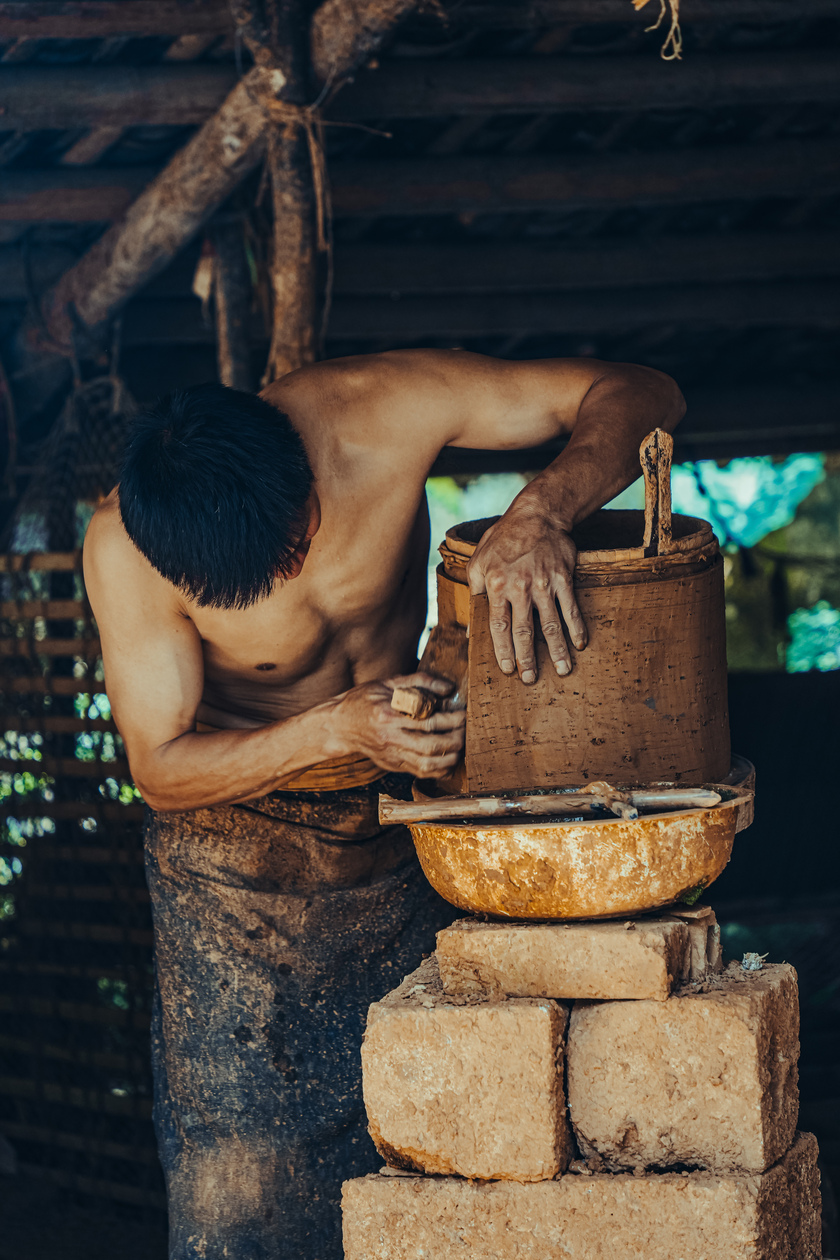
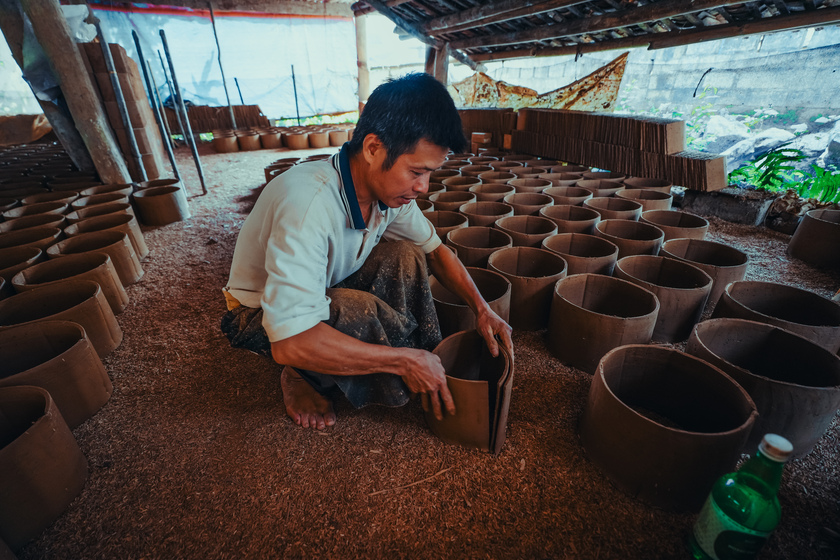
The image of hard-working, patient and diligent people painstakingly creating each tile carries pride in the unique cultural features of this place.
To make traditional gutter tiles, it is necessary to go through many stages from selecting soil, composting soil, kneading soil, filtering sand, shaping, drying, firing... All stages are done meticulously by hand to create beautiful products with long-term use. There are 2 types of tiles here, which are gutter tiles and ridge tiles, in which gutter tiles are for roofing and ridge tiles are for covering the roof.
The first step in making gutter tiles is for the worker to find a source of soil. Tu Do gutter tiles are made from fine, flexible clay, purchased from Doc Lap commune. The soil is pounded to soften, mixed with water, and then trampled by buffalo. Next, the soil must be incubated for about 5-6 days before being taken up to sift out impurities such as gravel and rocks. After being filtered, the soil is piled into blocks and covered with plastic to ensure moisture retention. Next is the shaping step, the soil is formed into rectangular blocks.
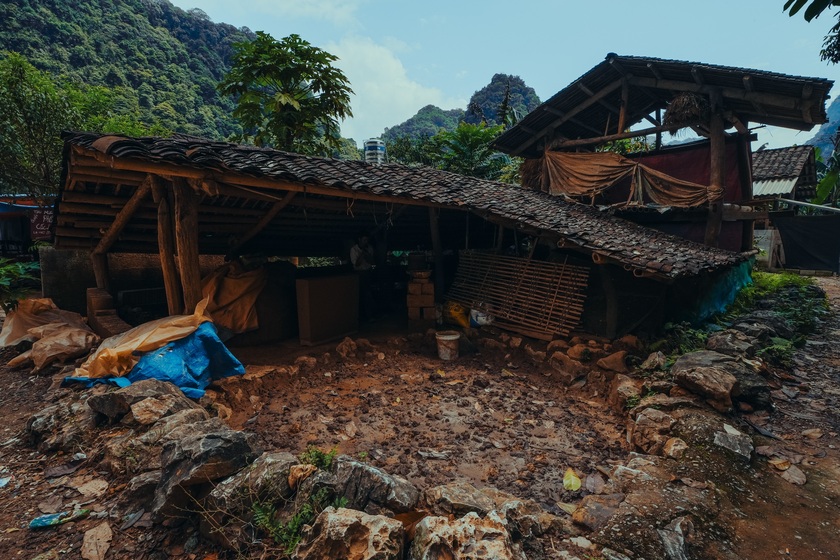


To make roof tiles in the traditional way, one must go through many stages from selecting soil, composting soil, kneading soil, filtering sand, shaping, drying, firing...
The worker usually uses a bamboo stick to compress the surface of the soil pillar, uses a measuring ruler to mark the soil pillar in half, marks the thickness exactly 1 cm, then uses a soil cutting tool to put it into the mold. The mold for making gutter tiles is circular, about 25 cm in diameter, on the body of the mold there are 4 equally divided edges and so each time the soil is put into the mold, 4 tiles can be made. The mold is placed on a rotating platform. The edge point on the mold creates a thin groove so that when the soil is dry, it can be broken into individual tiles. When pouring the soil into the mold, the worker rotates and compresses the soil evenly and tightly, then uses a cutting ruler to cut and trim.
The next step is to dry the tiles on the ground covered with rice husks, the purpose is to prevent the tiles from sticking to the ground surface and to ensure dryness. The final step is to place the tiles in the kiln continuously for about seven days and nights, people take turns to be on duty and keep the temperature just right to ensure good quality tiles. Each kiln will produce about 15,000 to 18,000 tiles.
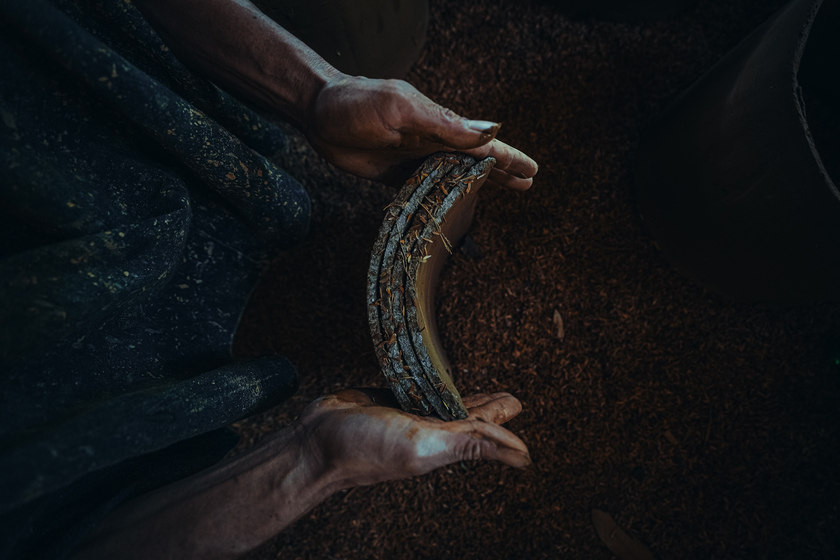
Tiles are dried on the ground covered with a layer of rice husks.
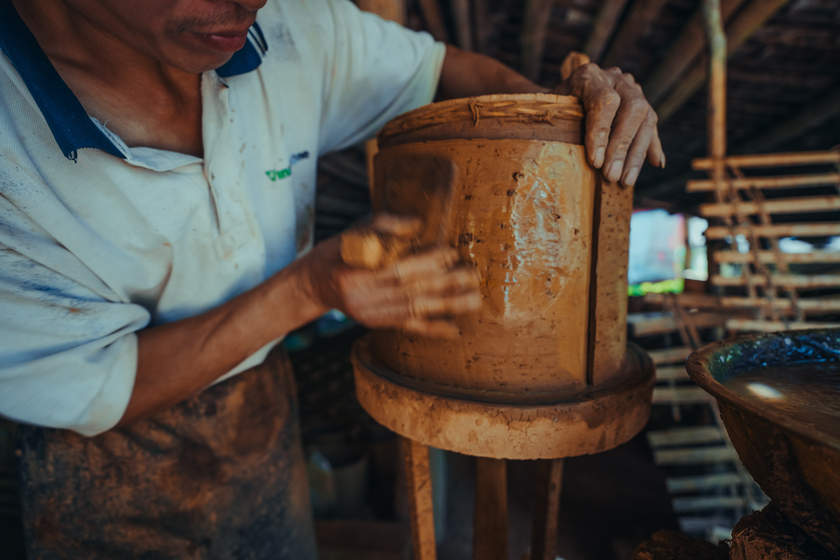

All stages are meticulously handmade to create beautiful products with long-lasting use.
The yin-yang tile making profession is not only a handicraft but also has profound cultural value, demonstrating the ingenuity and creativity of local people. Making yin-yang tiles has always brought economic stability to the people in Lung Ri. In particular, they always believe that this is a "family" profession of their ancestors, which needs to be preserved and developed. In order to maintain the craft village, the government needs to pay more attention to creating output for products, building brands to promote the craft village, developing tourism, and increasing income for local people.

The craft of making yin-yang tiles is not only a handicraft but also has profound cultural value, demonstrating the ingenuity and creativity of local people.







